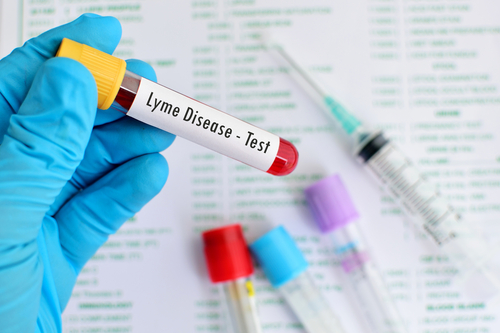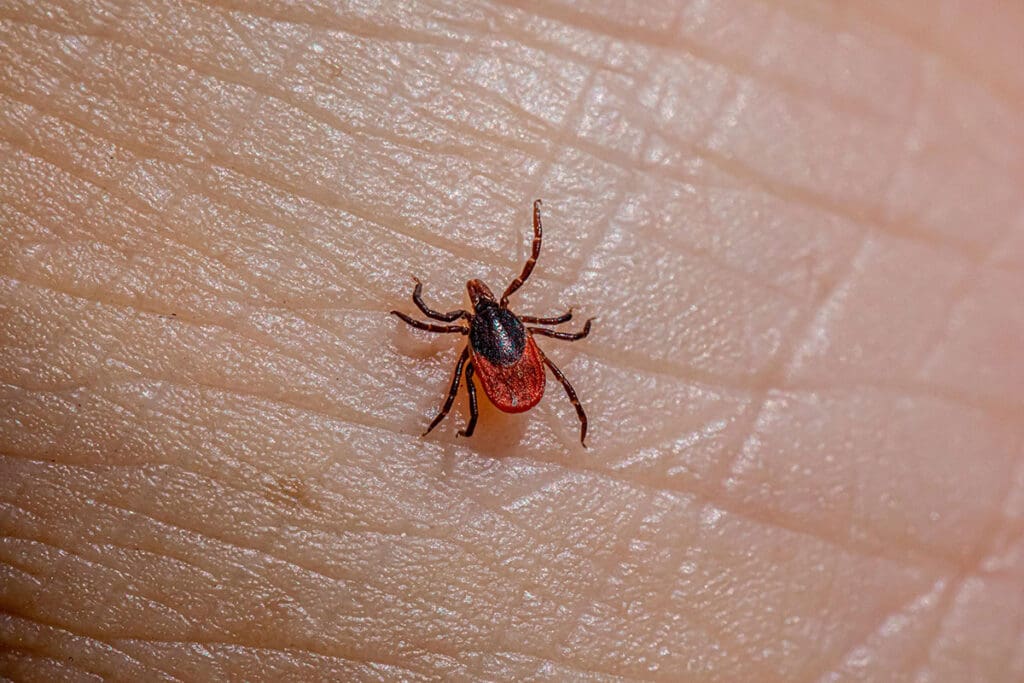
Why Most Lyme Disease Tests Fail Patients (and what to do instead)
Why do so many cases of Lyme disease and chronic Lyme disease go undiagnosed?
After all, it’s not uncommon for medical doctors to order Lyme lab tests if a patient has been bitten by a tick.
Nor is it unusual for naturopaths or integrative health practitioners to order Lyme lab work if they suspect chronic Lyme.
Yet, much of that lab work comes back negative, even when Lyme disease, and even its symptoms, are very active in the body.
I witness this nearly often in my practice. A patient presents with chronic disease symptoms that make me suspect Lyme. To confirm my suspicions, I’ll run a BioEnergetic Assessment and usually discover Lyme microbes.
When I tell the patient, they are typically both relieved—because their ailments have been validated—and confused, because often they had been tested for Lyme and told those tests results were negative.
The problem is, Lyme is really tricky to detect in the blood—especially early on.
This is why the medical establishment fully admits this disease is difficult to diagnose with traditional blood work.
Here’s how Lyme is usually diagnosed in conventional medicine:
If you see your doctor for a tick bite, he or she would ask you several questions and likely order one or two lab tests:
The most common lab test used is called the ELISA (enzyme-linked immunosorbent assay) test, which checks your antibody response to the Lyme bacteria.
While this test can offer some valuable information it’s far from perfect, and can give false positives or negatives depending up on when it’s administered.
The second test is the Western Blot Test, which screens for the presence of Borrelia antibodies by comparing your blood proteins to those with Lyme disease. If they match up, then you’d likely be diagnosed with Lyme.
Which test is more accurate?
In my experience, it greatly depends on when these tests are administered, as Lyme often hides out in other places in the body besides your blood.
Unfortunately, the standard procedure is to run those tests straight away and recommend antibiotics based on their results. Which, in my opinion, isn’t a very accurate or responsible way to diagnose and treat such a serious condition.
Additionally, these tests only pick up a fairly recent exposure to Lyme, and thus cannot be relied upon to diagnose a chronic case.
Most Lyme-literate doctors understand this, which is why they use additional labs.
Lyme-literate doctors and practitioners have a greater understanding of the progression of the disease.
Thus, they may recommend additional lab work at different intervals to confirm the presences of acute or chronic Lyme, including:
- The FISH test, which tests for the Borrelia bacteria specifically
- Direct microscopy testing for Bartonella bacteria, also transmitted by vectors
- The CD57 test, which tests the integrity of the CD57 natural killer cells, which tend to be targeted by Lyme specifically
- Urine testing for Borrelia bacteria
- MRIs (must be ordered by an MD)
- There are even tests available to check for Lyme bacteria in cerebral spinal fluid, breastmilk, tissue, and placenta
These particular labs are not endorsed by the CDC, nor are their results perfect either, which is why the most successful practitioners use them in combination with other testing methods.
Which brings me to our next point…
Non-lab methods of testing for Lyme
Due to the limitations of existing lab panels, many practitioners choose alternative methods of assessing Lyme and chronic Lyme—either as stand-alone assessments or in conjunction with lab work.
Some of these include:
- Applied kinesiology (AK), also known as muscle testing
- Symptom evaluation
- BioEnergetic assessment, also known as “BEA”, “EAV” or “EDS”
- Iridology, tongue diagnoses, pulse diagnosis
But do these alternative testing modalities actually produce an accurate result?
Yes…and no.
As I shared in the first article in this series, I had used BioEnergetic testing to screen for Lyme for years before I realized my testing technique was not quite sensitive enough to reliably detect stealth microbes 100% of the time.
This meant patients were getting better, but not everyone was experiencing full resolution. Once I modified my assessment technique, the flood gates opened and patients experienced a full recovery.
So, it very much depends upon the knowledge and skills of the practitioner administering the assessment.
It can also be valuable to ask for Lyme lab testing in addition to the alternative testing methods.
For example, the Western Blot Test can be very accurate after several weeks of proper Lyme detoxificiation, because the microbes will then show up in the blood.
Likewise, many practitioners swear by the CD57 test, and even the urine testing once a patient has been on a Lyme protocol for several weeks.
As we’ve discussed before, infections (especially Lyme disease which has been called “the great imitator”) usually take some time to reveal themselves. But, with a little knowledge under your belt about symptoms and a good detoxification protocol in place, it will eventually rear its ugly head!
So, timing and the skill and knowledge of yourself and your practitioner is everything.
Then there are the new tick tests…which could save you a trip to the doctor.
With Lyme fear sweeping the nation, coupled with the growing concern over antibiotic resistance, and the uncertainty of lab work accuracy, direct-tick-testing has become a popular service.
How does this work?
If you find a tick on yourself, you can send that tick directly to a lab to be tested for Lyme bacteria.
There are several labs and universities offering this service, and many of them test for several strains of Lyme bacteria—not just Borrelia.
Plus, you can choose to get results in as little as 24 hours.
What are the benefits of this type of test?
The biggest benefit, is the information.
Not only can these tests identify the type of tick (usually)—which can help gauge your risk of infection, but they can test for more than just one type of Lyme bacteria. This can save you a trip to the doctor and (hopefully) a round of antibiotics if the test comes back negative.
Many doctors now prescribe antibiotics routinely/preventively for tick bites, even if they’re unsure Lyme has been transmitted.
And, as we discussed in the last article, this often does more harm than good by weakening your immune system when you need it most.
Plus, studies have shown antibiotics do not always kill all the Lyme bacteria[1]. And, as more Lyme microbes are discovered, my belief is antibiotics will be proven even less effective.
So, what is the best way to test for Lyme disease?
This answer to this question varies from expert to expert. Here’s my suggestion based on years of experience (personal and professional), trial and error, and success helping patients.
If you’re fortunate enough to discover a tick on you, you can send that tick in to be tested.
That information will help you decide on your next step, and will be of great help to your practitioner should a future ailment arise.
If your tick comes back positive for Lyme bacteria you have two choices:
#1: See the doctor, get the semi-accurate ELISA and Western Blot tests, and (likely) take antibiotics. You could also ask to be re-tested in a few weeks to increase test accuracy before taking the antibiotic.
#2: Seek out a Lyme-literate doctor to explore your testing and treatment options.
Depending on your comfort level with integrative medicine, you can do this as a first line of defense (recommended!), OR after seeing your primary care doctor in order to rebuild your microbiome post-antibiotics and make sure you clean up any bacteria the antibiotic did not kill.
If your tick comes back negative, don’t presume you’re out of the woods.
Remember, there are new strains of Lyme bacteria being discovered all the time.
So, given the growing epidemic of the disease, I’d still recommend seeking out a Lyme-literate doctor just to be a on the safe side.
This disease is so much easier to deal with early on, so it certainly can’t hurt to get checked out.
My go-to testing method is the BioEnergetic Assessment, and I will recommend specific lab work on a case-by-case basis
The reasons are:
- I’ve found it to be the most accurate at assessing both acute and chronic Lyme.
- I’ve also enhanced my testing technique to pick up multi-generational Lyme, which you can’t do with most labwork. No, the science will not back me up on the presence of multi-generational Lyme, but I’ve helped several patients overcome it and they are living disease-free now. My guess is science will confirm this condition decades from now (but who has time to wait?!).
- It gives us guidance on how to best address these conditions using drug-free options such as homeopathy, herbs, and other detoxification methods.
What are those specific remedies and methods?
We’ll discuss that in the next post of this series: The Most Effective, Under-Utilized Remedies for Addressing Lyme and Chronic Lyme Disease.
A Personal Note…
I hope this series is helping you gain some clarity surrounding the complexity of this misunderstood condition.
I must admit, as a Bastyr-trained Naturopath (and a fan of science) it’s been a little daunting to put this information out there about Lyme topics which have yet to be validated by mainstream science—like the existence of multi-generational Lyme, for example.
But I always come back to this realization: people are sick now, and they don’t have time to wait for years or decades before research validates what I and hundreds of other Lyme experts have figured out.
My greatest wish is by putting this information out there, I can help more people heal and get on with their lives. For that, I’m willing to stick my neck out.
Blessings and healing,
-Dr. Joy
References:


